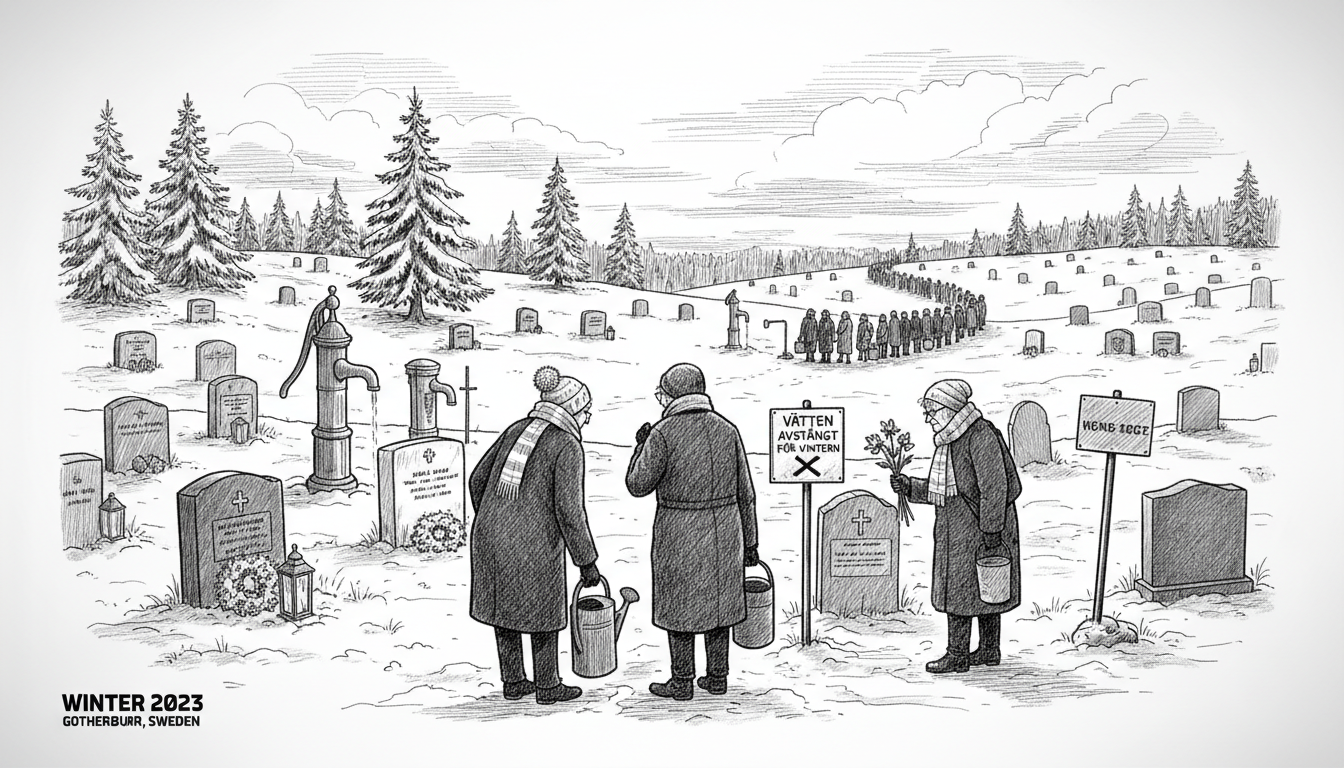Visitors to Kviberg Cemetery in northeastern Gothenburg are facing unexpected challenges as water access has been significantly reduced across the massive burial ground. Only six of approximately 80 water stations remain operational, leaving many visitors who purchased cut flowers struggling to find water for their arrangements.
The cemetery, spanning 130 hectares with about 30,000 graves, is both Gothenburg's largest burial ground and one of northern Europe's most extensive cemeteries. The timing of the water shutdown has proven particularly inconvenient, coinciding with the All Saints' Day period when families traditionally decorate graves with flowers and candles.
Sven-Erik Andersson, who operates the nearby Kviberg garden center, reports fielding numerous questions from confused visitors. "Many people are asking about the water situation," he said. "Those who didn't bring their own water bottles have had to borrow containers and get water from us to take with them."
Gothenburg Burial Services confirmed they turned off most water stations in mid-October, maintaining only six winter water points operational. Jessica Karlsson, maintenance department head for the burial services, explained this is standard winter procedure dating back approximately twenty years. "Otherwise there's a risk the pipes will freeze," she stated.
The communication gap has become apparent as many visitors remain unaware of the seasonal water restrictions. While the burial services maintain they post notices and have information boards with seasonal calendars, Karlsson acknowledged room for improvement. "Maybe we need to write it more clearly next year for clarity's sake," she said. "You can never provide too much information."
This situation highlights broader challenges in managing public facilities during seasonal transitions. The cemetery's vast size means some visitors must walk considerable distances between graves and functioning water stations. Elderly visitors and those with mobility issues face particular difficulties carrying water across the extensive grounds.
Karlsson noted that cemetery staff can assist visitors on weekdays and have access to vehicles for support. Despite the complaints, she reported relatively few formal complaints considering Gothenburg maintains 36 cemeteries with over 119,000 graves total.
The water restrictions typically remain in effect from around October 15 through April 15 annually, though this information appears poorly communicated to the public. The burial services website does mention limited water availability during darker months, but many visitors clearly don't check this resource before their cemetery visits.
This incident raises questions about balancing infrastructure maintenance with public convenience at essential community spaces. As Scandinavian cities like Gothenburg manage aging infrastructure systems, such seasonal service adjustments require clearer communication strategies to maintain public trust and accessibility.

